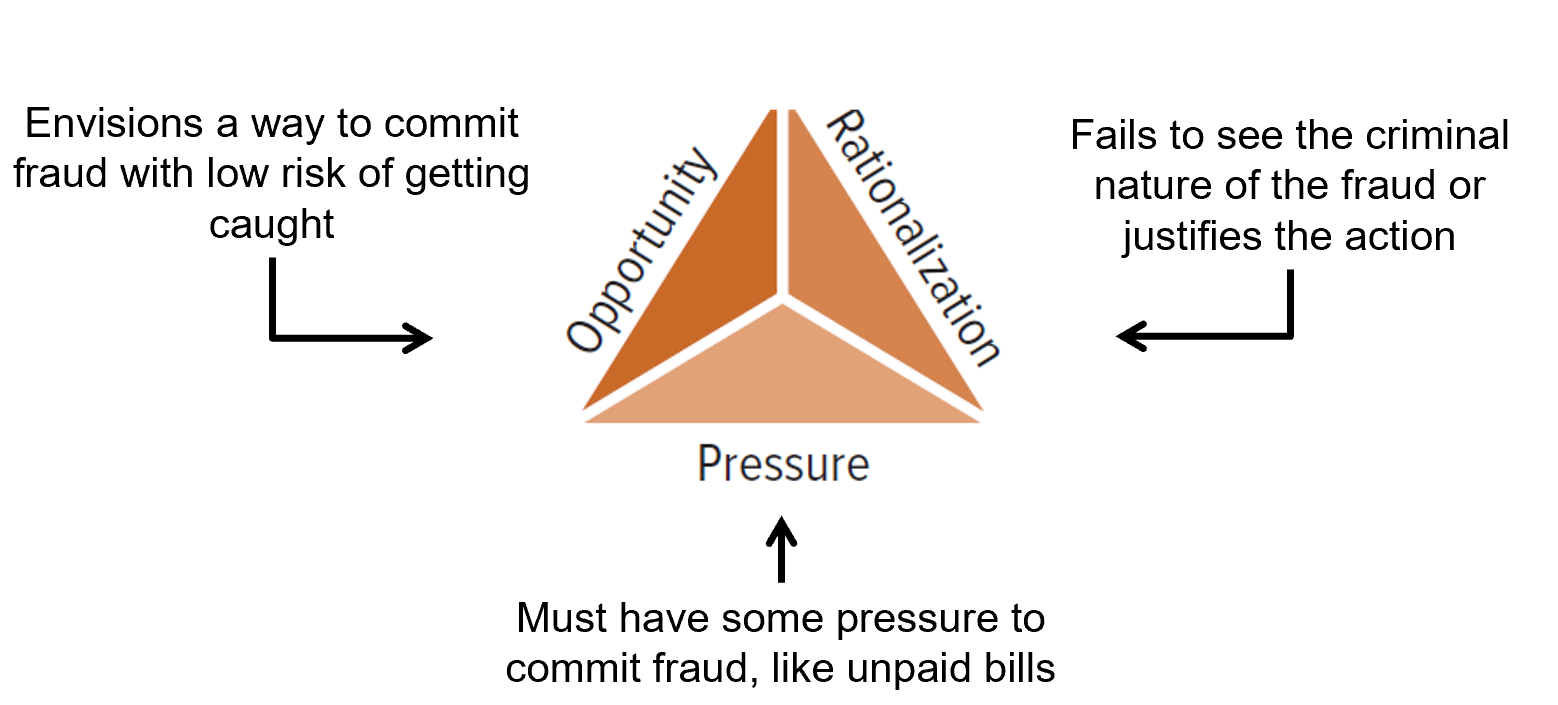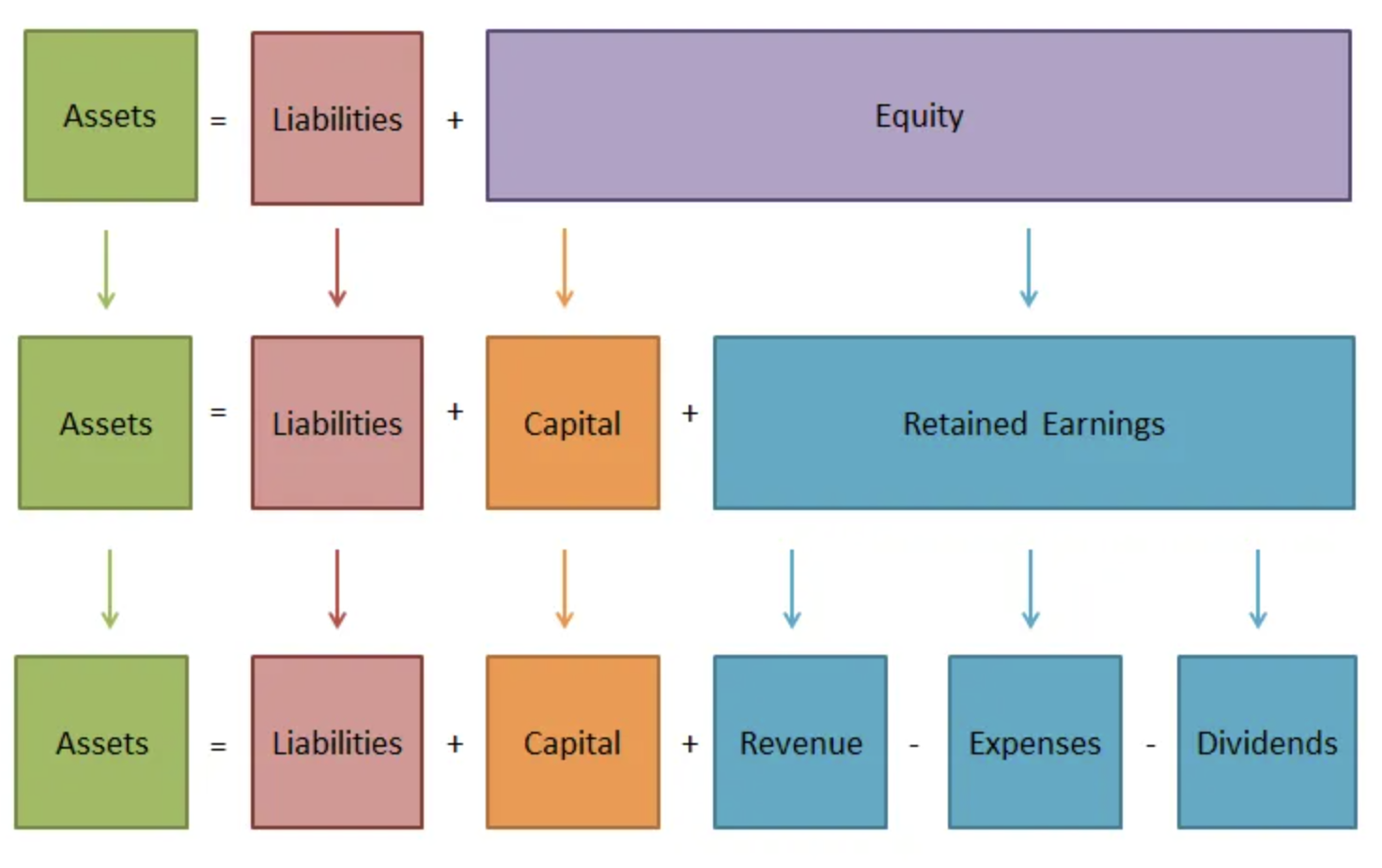Chapter 1 | Accounting in Business
Importance of Accounting
Accounting is an information and measurement system that identifies, records, and communicates an organization’s business activities
Users of Accounting Information
External Users:
Shareholders
Lenders
External auditors
Nonmanagerial employees
Regulators
Internal Users:
Purchasing managers
Human resource managers
Production managers
Research and development managers
Marketing managers
Fundamentals of Accounting
Ethics are beliefs that separate right from wrong
Good Ethics are good business
Ethical Decision Making Steps:
Fraud Triangle

Generally Accepted Accounting Principles – GAAP
(Financial accounting is governed by concepts and rules known as GAAP)
Relevance: Relevant information affects decisions of users
Faithful Representation: Faithful representation means information accurately reflects business results
FASB: The Financial Accounting Standards Board (FASB) is given the task of setting GAAP from the Securities and Exchange Commission (SEC).
SEC: A U.S. government agency that oversees proper use of GAAP by companies that sell stock and debt to the public.
IASB: The International Accounting Standards Board (IASB) is a group (consisting of individuals from many countries) that issues International Financial Reporting Standards (IFRS), which identify preferred accounting practices. The FASB and IASB are working to reduce the differences between U.S. GAAP and IFRS.
Conceptual Framework
Objectives: To provide information useful to investors, creditors, and others.
Qualitative Characteristics: To require information that has relevance and faithful representation.
Elements: To define items in financial statements
Recognition and Measurement: To set criteria that an item must meet for it to be recognized as an element; and how to measure that element
Accounting Principles
Measurement principle (Cost principle): Accounting information is based on actual cost. Actual cost is considered objective
Revenue recognition principle: 1.Recognize revenue when goods or services are provided to customers and 2.at an amount expected to be received from the customer.
Expense recognition principle (matching principle): A company records its expenses incurred to generate the revenue reported.
Full disclosure principle: A company reports the details behind financial statements that would impact users’ decisions in the notes to the financial statements.
Accounting Assumptions:
Going-Concern: The business is presumed to continue operating instead of being closed or sold.
Monetary Unit: Transactions and events are expressed in monetary, or money, units
Time Period: The life of a company can be divided into time periods, such as months and years
Business Entity: A business is accounted for separately from other business entities, including its owner
Accounting Constraint
Information disclosed by an entity must have benefits to the user that are greater than the costs of providing it.
Cost-benefit constraint: says that only information with benefits which are greater than their costs need to be disclosed.
Materiality: is sometimes included as a constraint and is the ability of information to influence decisions.
Conservatism and Industry Practices: are sometimes included as accounting constraints, also.
Business Entity Structures
Sole Proprietorship: a business owned by one person
Partnership: is a business owned by two or more people, called partners, which are jointly liable for tax and other obligations
Corporation: is a business legally separate from its owner or owners, meaning it is responsible for its own acts and its own debts.
Limited Liability Company (LLC): includes one or more members who are not personally liable for the LLC’s debts.
Business Transactions and Accounting
Assets: resources a company owns or controls
Liabilities: creditors’ claims on assets
Equity: the owner’s claim on assets and is equal to assets minus liabilities
Accounting Equation
Assets = Liabilities + Equity
Write the Accounting Equation again: A= L + E
If total assets increase, then liabilities or equity must: increase
If total assets decrease, then liabilities or equity must: decrease
After EACH transaction, the accounting equation must ALWAYS: balance
Match the term with the appropriate definition.
__F___ Assets
__C___ Liabilities
__E___ Equity
__D___ Dividends
__B___ Revenues
__A__ Expenses
- Costs of selling products or services
- Sales of products or services to customers
- Amounts owed
- Distributions to stockholders
- Owners’ claims to resources
- Resources of a company
Categorize the Financial Claims - (Asset, Liability, or Stockholders’ Equity)
Cash Mortgage Supplies
Stock Merchandise Accounts Receivable
Accumulated Profits Accounts Payable Equipment
Buildings Business Loan Property
Plant Prepaid Insurance Debt
Expanded Accounting Equation

Contributed Capital > Common Stock: Inflows of cash from shareholders in exchange for stock
Retained Earnings > - Dividends: Payroll out distributions to shareholders. Reduces equity
> + Revenues: Sales of product or service. Increases Equity
> - Expenses: Costs of providing products or services. Reduces Equity
Financial Statements
Income Statement describes a company’s revenues and expenses and computes net income or loss over a period of time
Statement of Retained Earnings reports how retained earnings changes from net income (or loss) and from any dividends over a period of time
Balance Sheet describes a company’s financial position (types and amounts of assets, liabilities, and equity) at a point in time
Statement of Cash Flows identifies cash inflows (receipts) and cash outflows (payments) over a period of time.